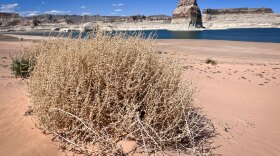-
The warm autumn put Salt Lake City on track for its second-warmest year on record. It’s running 3.3 degrees hotter than its historical average.
-
October set the stage for Utah to have a solid spring snowmelt runoff. That is, if the state can catch enough snow this winter.
-
The water year that ended Sept. 30 was one of the driest on record for parts of the state, including Salt Lake City and St. George.
-
A Salt Lake City kid born in 2005 lived through hundreds more days of extreme heat during childhood than one born in 1975, says a new analysis. That’s changing the experience of growing up.
-
After a promising forecast, monsoon rains ghosted Utah for most of the summer. While the recent showers were a welcome relief, they couldn’t help the state climb out of its precipitation deficit.
-
Actualmente, la Biblioteca de West Valley está abierta solo de 10 a.m. a 2 p.m. debido a limitaciones del sistema de aire acondicionado. “Por más que nuestro viejo edificio y equipo estén trabajando duro, a veces no dan abasto”, dijo el condado.
-
There's more going on in trees than what most of us may know. Experts explain the science of trees.
-
The Southwest megadrought that began in 2000 could continue until 2050 or maybe even the end of the century. That would mean tough choices for Utah and the Colorado River Basin.
-
Right now, the West Valley Library is open 10 a.m. to 2 p.m. due to limited air conditioning. “As hard as our old building and equipment is working, sometimes it can't quite keep up,” the county said.
-
At Grand Canyon National Park, a lightning-sparked fire that started July 4 highlighted the challenges of using fire to benefit the landscape. The wind-whipped flames ended up consuming a historic lodge and dozens of other structures.
-
This seasonal dance choreographed by Mother Nature marks a special time for the southwestern United States and Mexico. It is when residents clasp their hands, hoping for much-needed moisture to dampen the threat of wildfire and keep rivers flowing.
-
The Forsyth Fire started Thursday in the Pine Valley Mountains and has already burned about 2.3 square miles. It has forced people to evacuate from the Pine Valley community and nearby campgrounds.
Play Live Radio
Next Up:
0:00
0:00
Available On Air Stations











